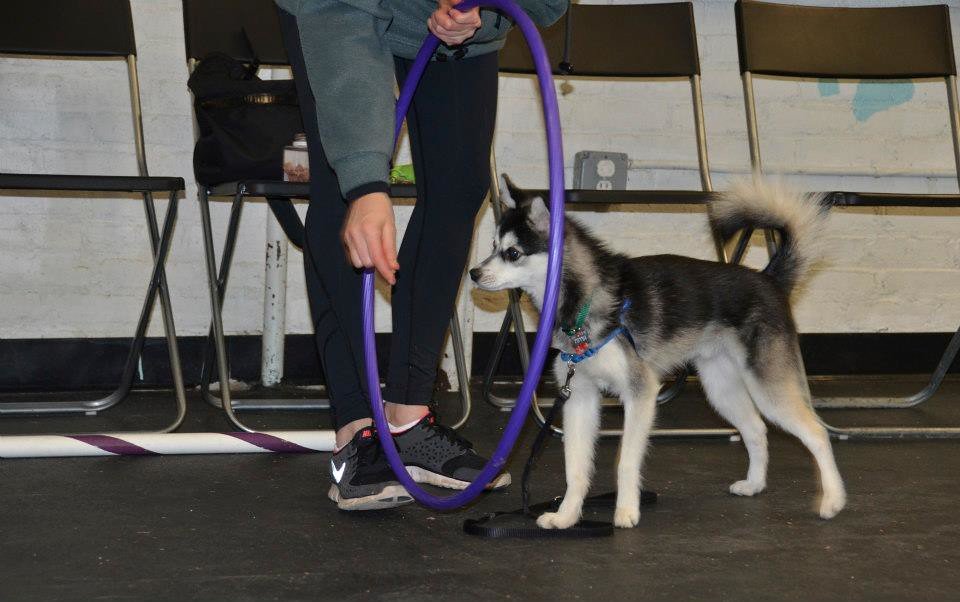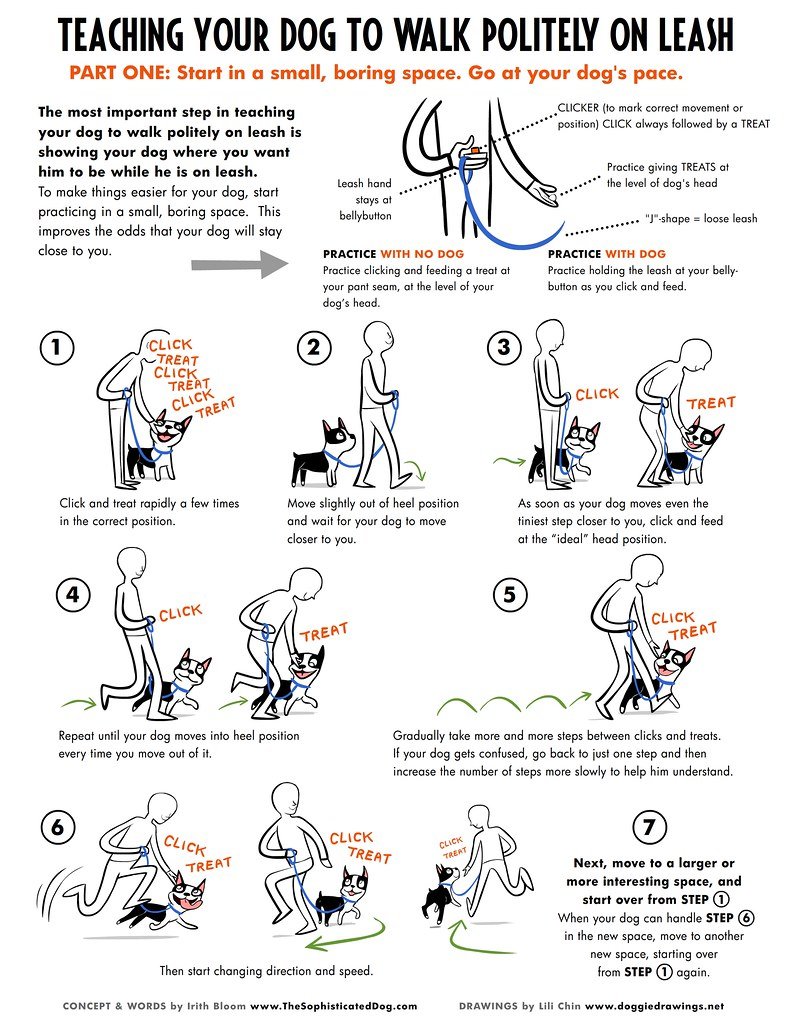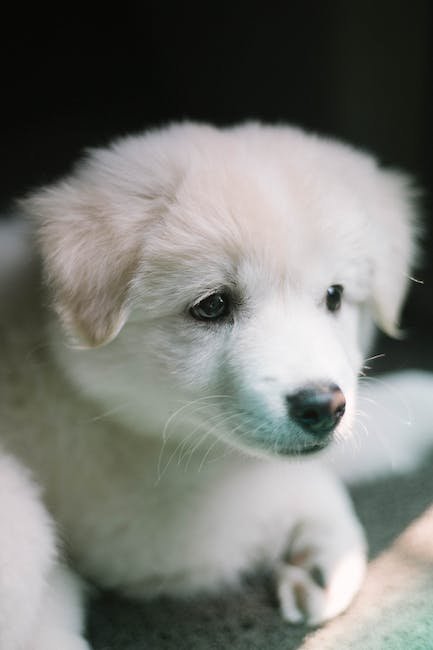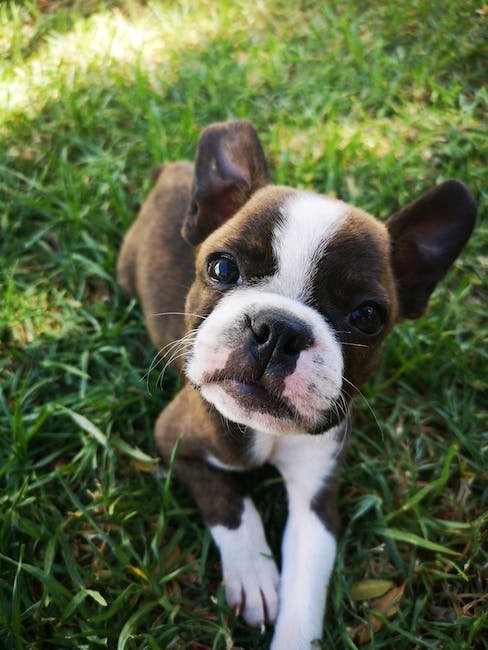Brace yourself for the imminent arrival of uncontainable cuteness and boundless energy, as you prepare to welcome a furry addition to your family - a mischievous little puppy. As adorable as they may be, these tiny bundles of joy are filled to the brim with unbridled curiosity, an insatiable eagerness to explore, and a knack for finding themselves in the most peculiar situations. Among the countless skills your new furry friend will need to acquire, leash training is an essential one that tops the list. But when exactly is the right time to embark on this thrilling adventure of leash training? Should you start immediately or wait for their tiny paws to grow a bit more? Together, let us uncover the secrets behind determining the perfect moment to introduce your fluffy companion to the all-important world of leash training.
Table of Contents
- Timing is Key: The Perfect Age to Begin Leash Training Your Puppy
- Setting the Basics: Understanding the Importance of Proper Leash Training
- Soothing Techniques: Tips to Ease Your Puppy into Leash Training
- Puppy Steps: A Step-by-Step Guide to Introduce Leash Training to Your Furry Friend
- Expert Advice: When and How to Progress in Leash Training with Confidence
- Q&A
- Key Takeaways

Timing is Key: The Perfect Age to Begin Leash Training Your Puppy
The journey of leash training your puppy begins at a crucial age, known as the “golden window” of opportunity. This magical time typically falls between 8 to 16 weeks of age, when your furry bundle is still a sponge, soaking up knowledge and finding their place in the world. Leash training during this period sets the foundation for a happy and well-behaved companion in the years to come.
During the ideal age range, your puppy’s mind is like a blank canvas, ready to be filled with the art of leash manners. Introducing them to the leash gently and positively while they are young helps them develop a comfort and familiarity with this essential tool. It is an opportunity to ensure that leash time becomes an enjoyable and bonding experience for both you and your pup.
Here are a few key points to keep in mind when starting leash training with your young companion:
- Patience is key. Puppies have short attention spans, so keep training sessions short and fun-filled to prevent overwhelm.
– Make it positive. Use treats, praise, and rewards to reinforce good behavior and motivate your pup.
– Take it slow. Begin by allowing your puppy to explore and get used to the feeling of wearing a leash before asking them to walk beside you.
- Choose the right gear. Ensure the leash and collar or harness are the appropriate size and fit snugly but comfortably on your pup.
– Be consistent. Consistency in your training methods and expectations will help your puppy understand what is expected of them.
By starting leash training at the perfect age, you are setting your puppy up for a lifetime of enjoyable walks and adventures together. With patience, positive reinforcement, and a dash of creativity, you can help your pup become a leash-walking pro in no time!
Setting the Basics: Understanding the Importance of Proper Leash Training
Mastering leash training is an essential skill that every responsible dog owner should prioritize. It goes beyond simply attaching a leash to your furry friend’s collar and taking them for a walk. Proper leash training establishes a strong foundation, ensuring the safety of both you and your canine companion. Let’s delve into the significant importance of leash training and why it sets the stage for a harmonious relationship between you and your four-legged buddy.
The benefits of leash training are multifaceted. Firstly, it provides control over your dog’s movements, enabling you to guide them away from potential dangers, such as busy roads or aggressive animals. Moreover, it fosters good behavior by teaching your pup to walk calmly beside you, rather than tugging relentlessly or darting away. With consistent leash training, your dog will learn to become more attentive, responsive, and obedient, demonstrating their respect for your leadership.
- Safety: Leash training reduces the risk of accidents and keeps your dog out of harm’s way.
- Behavioral Development: Through leash training, your pup learns to exhibit desirable behaviors and self-control.
- Bond: A properly leash-trained dog and owner experience a stronger bond built on trust and clear communication.
- Enhanced Socialization: Walking calmly on a leash prepares your dog to interact positively with other people and animals, making outings more enjoyable for everyone.
In conclusion, leash training plays a vital role in fostering a well-behaved, safe, and happy companion. It empowers dog owners to guide their furry friends confidently through the vast world while establishing a strong foundation for further training. Remember, with patience, consistency, and positive reinforcement, mastering leash training can transform your walks into enjoyable adventures for both you and your beloved pet.

Soothing Techniques: Tips to Ease Your Puppy into Leash Training
Leash training can be a daunting task for both puppies and their owners. It requires patience, consistency, and a calm approach to help your furry friend become comfortable with this new experience. Here are some soothing techniques that can make the process easier and more enjoyable for both of you:
1. Start Slow: Introduce your puppy to the leash gradually. Begin by allowing them to sniff and investigate the leash while remaining in a familiar and secure environment. Once they seem at ease, attach the leash to their collar for short periods, gradually increasing the duration.
2. Positive Reinforcement: Use treats, praise, and gentle petting to reward your puppy for any progress they make during leash training. Positive reinforcement helps build a strong bond between you and your puppy and encourages them to associate the leash with positive experiences.
3. Familiarize with the Gear: Before heading out for a walk, let your puppy get accustomed to wearing the collar or harness. Allow them to wear it around the house for shorter periods so they can adjust to the feeling. This will help eliminate any discomfort or resistance during outdoor training sessions.
Remember, every puppy is unique and will require different lengths of time to adapt to leash training. Stay patient, consistent, and continue to provide a supportive and comforting environment. By using these soothing techniques, your furry companion will gradually become confident and excited about their walks alongside you.
Puppy Steps: A Step-by-Step Guide to Introduce Leash Training to Your Furry Friend
Are you ready to embark on the exciting journey of leash training with your adorable furry friend? Leash training is an essential skill that will allow you to take your puppy for walks, explore the great outdoors together, and strengthen your bond. Follow this step-by-step guide to make the process enjoyable and effective for both you and your pup.
Step 1: Introduce the Leash
Start by introducing the leash to your puppy in a positive and non-threatening manner. Allow them to sniff and investigate the leash, rewarding any curiosity with treats and praise. Gradually attach the leash to your puppy’s collar or harness while providing small rewards for their cooperation. This step aims to associate the leash with positive experiences and create a sense of comfort.
Step 2: Get Them Acquainted with the Sensation
Once your puppy is comfortable wearing the leash, it’s time to familiarize them with the sensation of tension. In a safe and controlled environment, hold the leash loosely and encourage your pup to move around. As they begin to pull or apply pressure, respond with gentle resistance. This will teach them their actions directly impact the leash’s tension, preparing them for the concept of walking on a lead.
Step 3: Start Small and Celebrate Progress
Now that your puppy understands the basics, it’s time to take your first steps together! Begin by walking in a distraction-free area, encouraging your pup to follow your lead. If they pull or wander off course, gently redirect them and reward them with treats or praise when they exhibit desired behavior. Gradually increase the complexity of your training walks, introducing distractions and new environments, always celebrating each milestone your pup achieves.
Expert Advice: When and How to Progress in Leash Training with Confidence
Leash training can be a challenging yet rewarding experience for both you and your furry friend. To progress with confidence, it’s important to understand the right time and method to transition from basic leash handling to more advanced training techniques.
One key aspect to consider is your dog’s age and behavior. Puppies are like sponges, eager to learn and explore the world around them. Start with short, supervised walks in a quiet area to build their confidence and acclimate them to the leash. As they grow older and more comfortable, gradually introduce new environments, such as parks or busier streets, to expose them to different stimuli.
Consistency is key in leash training. Set a routine and stick to it. This helps establish a sense of structure and reinforces good behavior. Utilize positive reinforcement techniques such as treats or praise when your dog follows commands or walks calmly on the leash. Incorporate training sessions into daily activities to keep your pup engaged and reinforce their understanding of leash etiquette.
Consider incorporating a variety of leash training techniques to cater to your dog’s individual needs. Some dogs respond better to clicker training, while others may benefit from distraction methods or obedience classes. Experiment with different training tools, such as front-clip harnesses or head halters, to find what works best for your dog’s obedience and safety.
Remember, patience is key when progressing in leash training. Celebrate small victories and remain consistent in your efforts. As you gain more confidence in your training abilities, your dog will too. Enjoy the journey of building a strong bond with your furry companion, one leash step at a time.
Q&A
When should you start leash training your puppy?
Ideally, you should start leash training your puppy as soon as you bring them home. Getting them used to wearing a collar and leash at a young age will help establish good walking habits from the beginning.
How do you start leash training a puppy?
Start by introducing the leash and collar to your puppy in a positive and calm environment. Let them get used to wearing the collar first before attaching the leash. Begin with short and gentle walks, rewarding them with treats and praise for good behavior.
What kind of leash and collar should you use for leash training?
For leash training, it is best to use a lightweight leash, approximately 4-6 feet long, made of nylon or leather. Choose a collar that fits properly and is not too tight or too loose. A flat collar or a martingale collar are typically suitable for leash training purposes.
How often should you practice leash training with your puppy?
Consistency is key when leash training your puppy. Aim for at least two short training sessions per day, each lasting around 10-15 minutes. As your puppy gets more comfortable, gradually increase the duration and difficulty of the walks.
What are some common challenges faced during leash training?
Some common challenges you may face during leash training include pulling, distractions, and fear or anxiety. It’s important to remain patient and consistent, using positive reinforcement techniques to overcome these challenges and encourage good leash manners.
Should you seek professional help for leash training?
If you are having difficulty leash training your puppy or encountering specific behavioral issues, it may be beneficial to seek guidance from a professional dog trainer. They can provide valuable tips and techniques tailored to your puppy’s individual needs.
Key Takeaways
As we conclude this thought-provoking exploration into the world of leash training, we hope to have shed some light on the question that has piqued the curiosity of both experienced and novice puppy owners alike: when should you embark on this captivating journey with your furry companion?
By considering various factors such as your puppy’s age, breed, and individual temperament, you stand to make an informed decision that will shape not only your canine’s behavior but also your future adventures together. Remember, dear reader, that every puppy possesses a unique learning curve, much like the vast tapestry of life itself.
While it may be tempting to rush into the realms of leash training, bear in mind that patience and understanding are essential ingredients for success. Allow your furry friend to explore their surroundings at their own pace, delicately guiding them towards the path of proper behavior.
As you embark on the incredible voyage of leash training, connect with fellow puppy enthusiasts, trainers, and behavior specialists who can offer guidance. Their expertise can prove invaluable in navigating the twists and turns, molding your adorable companion into a paragon of politeness on the leash.
Whether you choose to commence leash training as soon as your puppy joins your family or opt to give them a little more time to acclimate, remember that bonding and trust are the soulful foundations of this process. Embrace this as an opportunity to forge an unbreakable bond, marking the beginning of an enduring companionship.
So, fellow puppy devotees, as we bid farewell to this enthralling journey, let us embrace the idea that the right time to begin leash training is ultimately an intricate dance between seeking expert counsel and listening to the whispers of your canine companion.
May your pawprints on the path to leash training be guided by love, understanding, and an unwavering commitment to nurturing your precious pup’s journey to becoming a true leash-walking superstar. The enchanting world of long walks, playful gambols, and newfound freedom beckons – let us embark on this adventure, one delightful step at a time.
As an affiliate, my content may feature links to products I personally use and recommend. By taking action, like subscribing or making a purchase, you’ll be supporting my work and fueling my taco cravings at the same time. Win-win, right?
Want to read more? Check out our Affiliate Disclosure page.